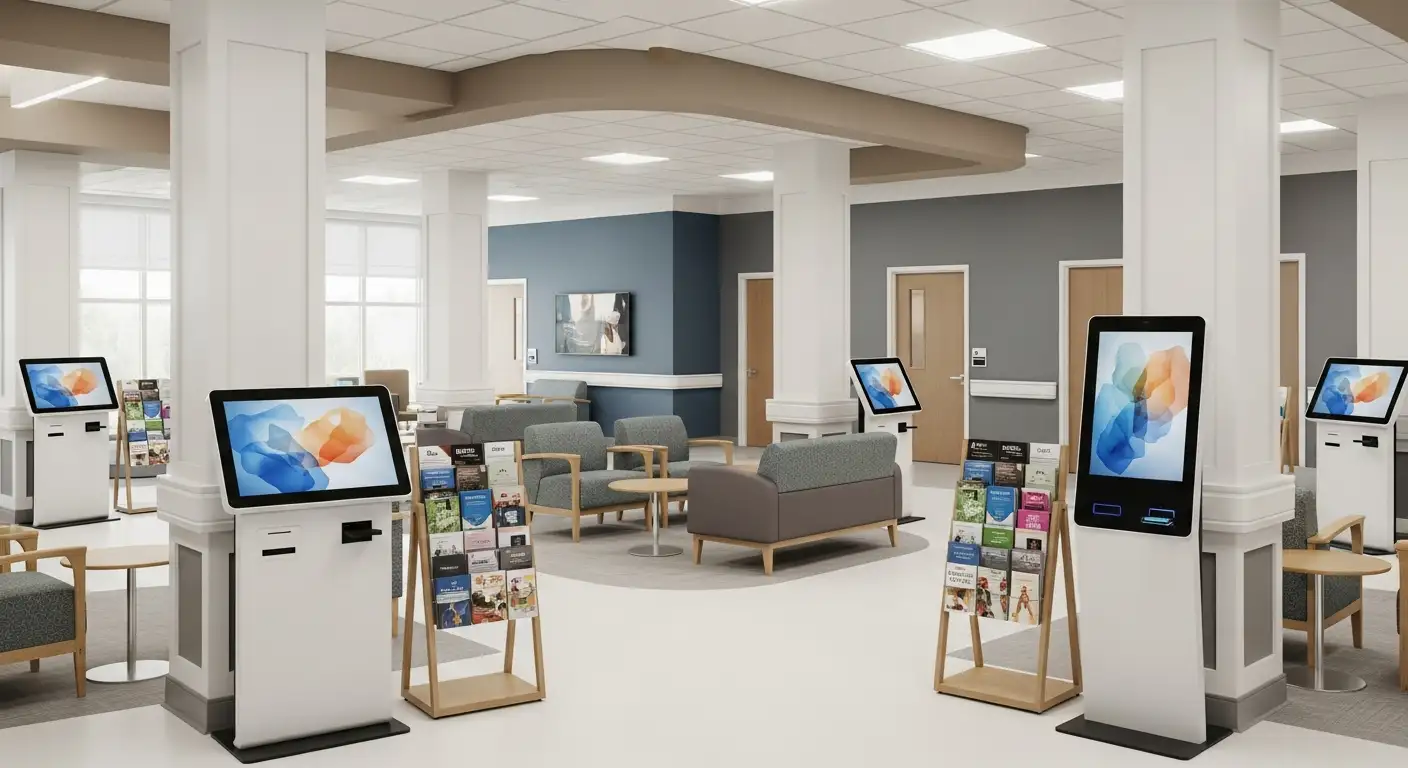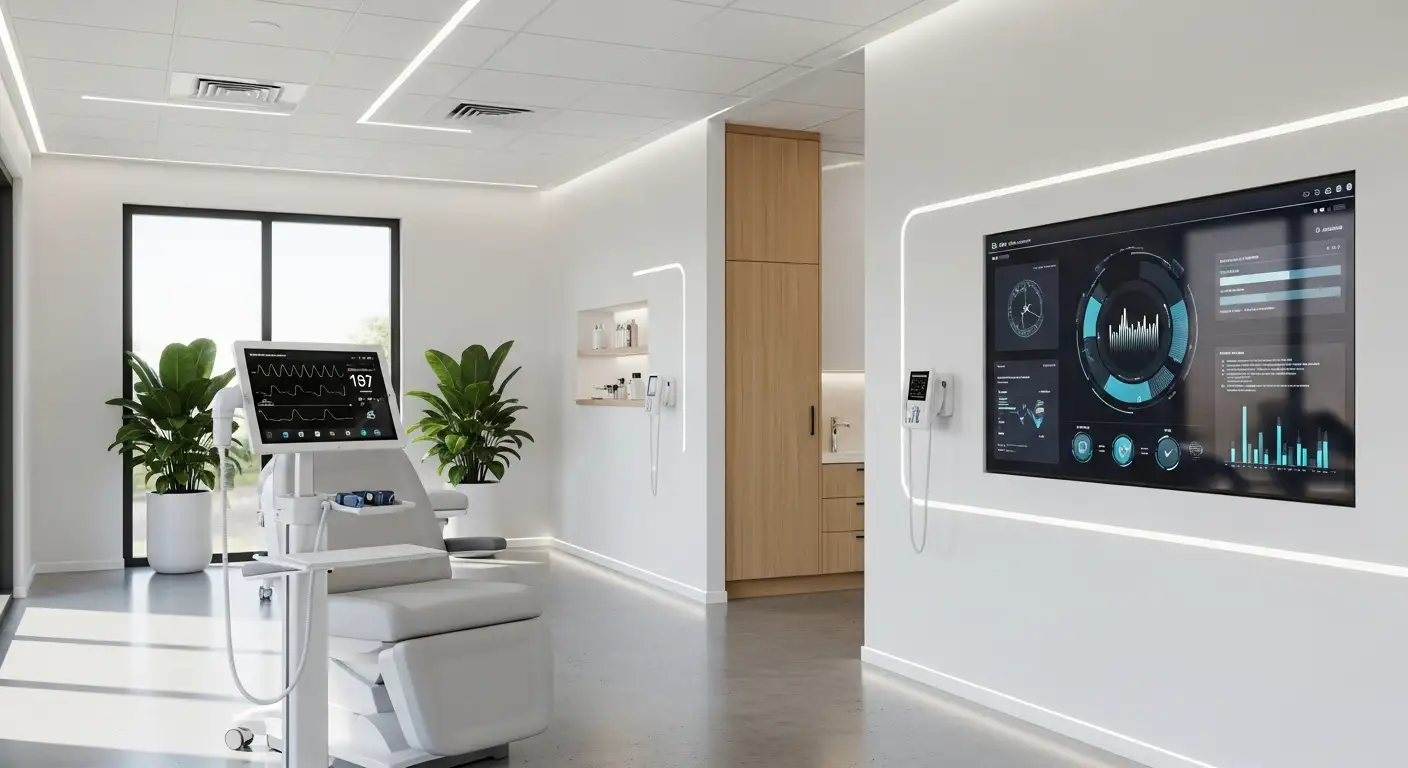What Is a Personalized Hybrid Healthcare Program?

Understanding the Shift Towards Hybrid Healthcare
The healthcare landscape is rapidly evolving, driven by technological advancements and the need for more flexible, patient-centered care models. Among these innovations, personalized hybrid healthcare programs stand out as a transformative approach, blending virtual and in-person services to tailor treatment pathways to individual needs. This article explores what these programs are, their components, benefits, implementation strategies, and future prospects, illustrating how they are reshaping healthcare delivery for diverse patient populations.
Defining the Personalized Hybrid Healthcare Program
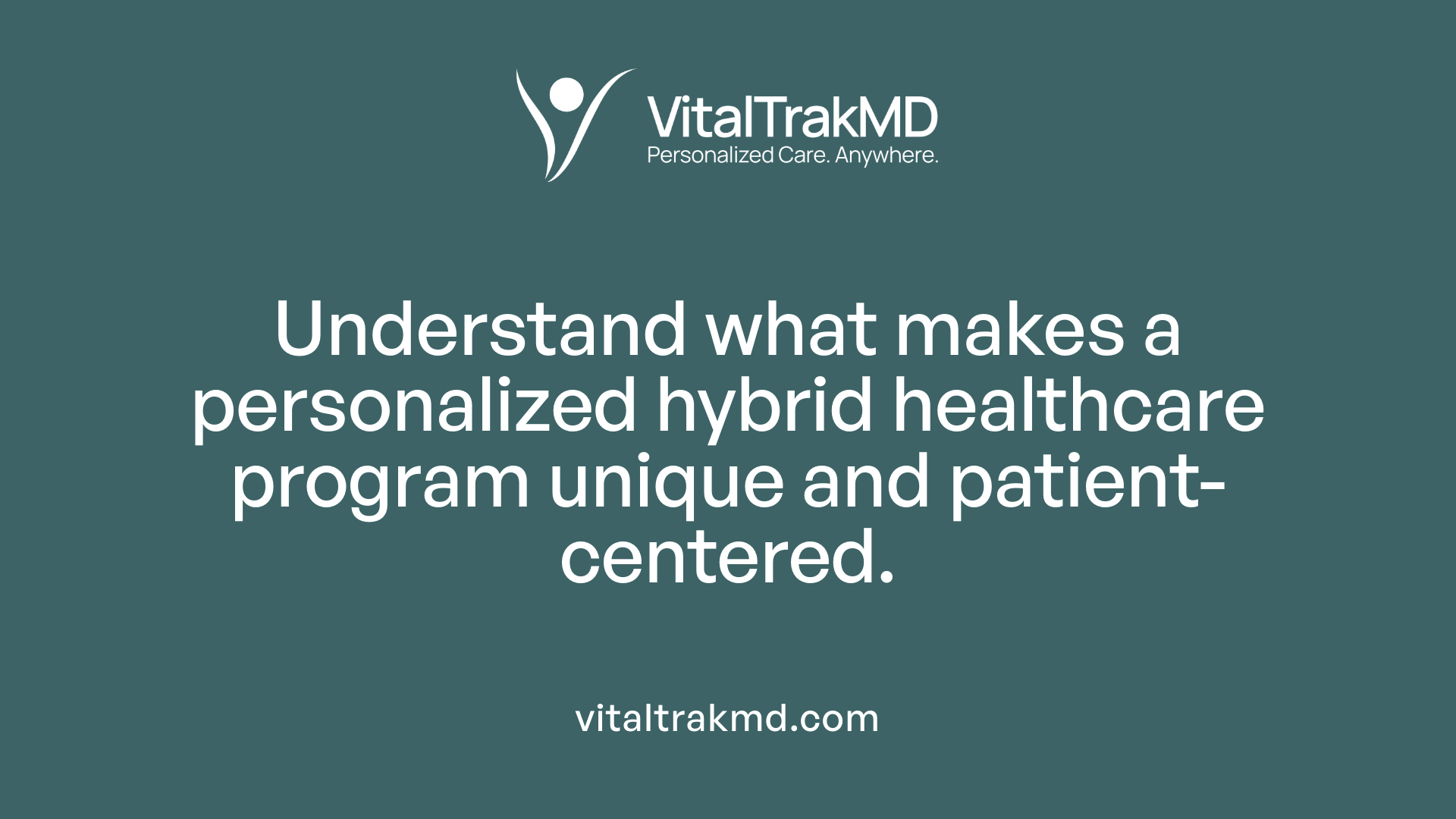
What is a personalized hybrid healthcare program?
A personalized hybrid healthcare program is a flexible care model that blends virtual and in-person healthcare services, customized to meet the unique needs of each patient. It employs innovative tools like secure video calls, remote health monitoring devices, digital appointment scheduling, and automated follow-up communications to deliver more accessible and efficient care.
This approach allows healthcare providers to tailor treatment plans based on individual circumstances, enabling some aspects of care to be managed remotely while maintaining face-to-face visits when necessary. For example, a patient with a chronic condition like diabetes may have their routine check-ins and glucose monitoring managed virtually, while in-person visits are reserved for physical examinations or complex procedures.
By integrating technology and personal care, these programs aim to improve patient engagement, satisfaction, and health outcomes. They also help reduce unnecessary hospital visits, lower costs, and enhance overall healthcare delivery.
Core purpose of the model.
The main goal of a personalized hybrid healthcare program is to make healthcare more adaptable, cost-effective, and patient-centered. It seeks to overcome traditional barriers such as long wait times, geographical limitations, and inflexible scheduling.
Through this model, patients gain greater control over their health management, choosing how and when to interact with their healthcare team. Providers benefit from streamlined workflows, better resource utilization, and the ability to deliver continuous, coordinated care.
The hybrid approach also aims to address the increasing demand for personalized medicine, where care strategies are tailored to individual risks, preferences, and lifestyles, enhancing the overall quality and effectiveness of treatment.
Historical context and pandemic influence.
The COVID-19 pandemic significantly accelerated the adoption of hybrid healthcare models worldwide. As in-person visits became challenging due to safety concerns and restrictions, healthcare systems rapidly integrated telehealth solutions to ensure continuity of care.
During this period, public acceptance of virtual care grew markedly, and many practices recognized the benefits of combining remote and traditional services. Estimates indicate that telehealth usage rose dramatically—some reports suggesting adoption rates between 60% to 90%, well above pre-pandemic levels.
This shift not only improved access and reduced infection risk but also prompted healthcare providers to innovate and invest in digital infrastructure. As a result, hybrid models have become a standard component of healthcare delivery, with ongoing development to enhance their integration and effectiveness.
This evolution reflects a broader transformation towards more resilient, flexible, and patient-focused healthcare systems, promising lasting benefits beyond the pandemic.
Components and Features of Hybrid Healthcare Models
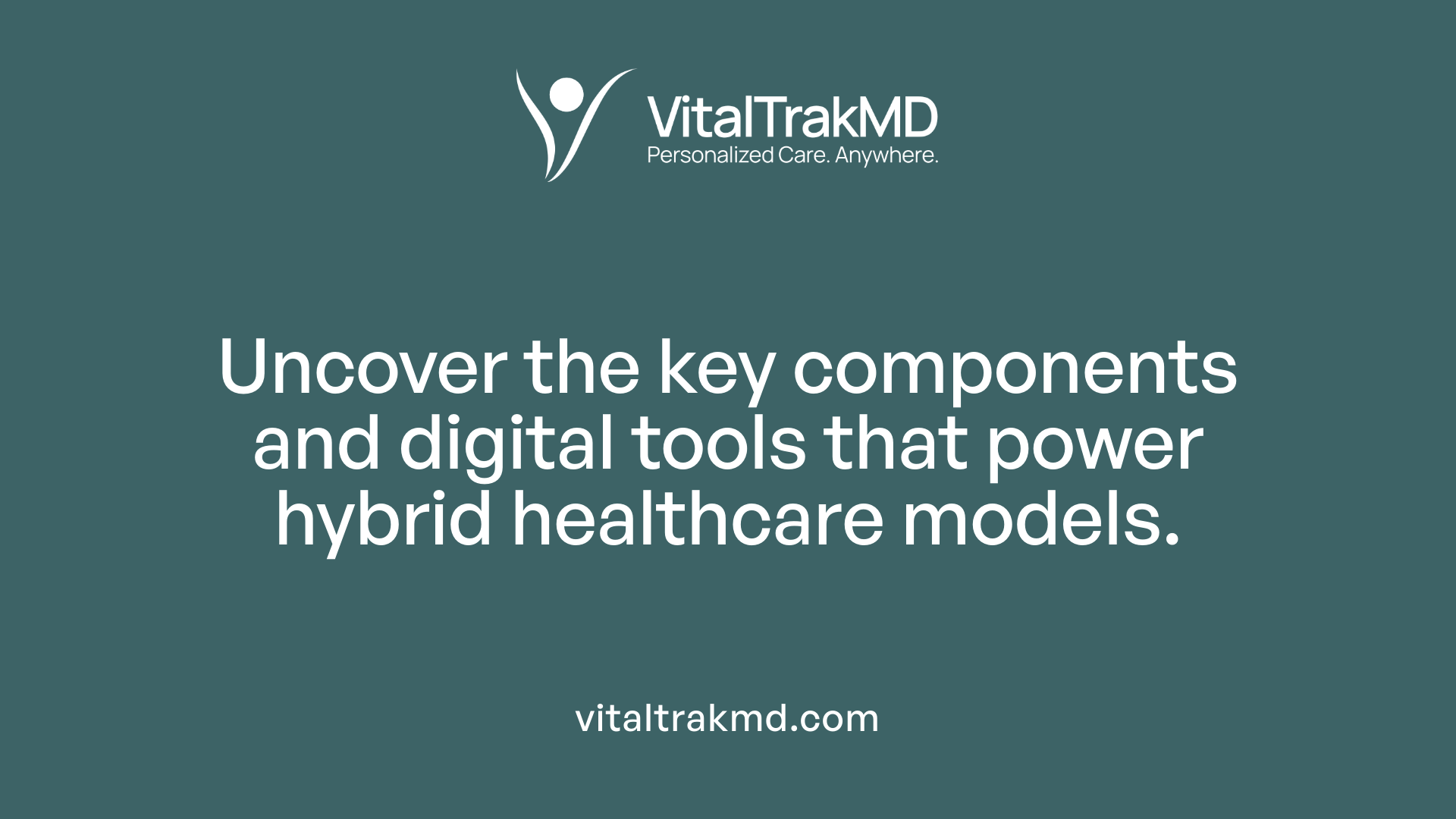
What are the components and features of hybrid healthcare models?
Hybrid healthcare models blend in-person and virtual care elements to create a flexible, patient-centered approach to health management. These systems leverage a variety of digital tools, such as telemedicine platforms, remote patient monitoring devices, appointment scheduling apps, secure messaging, and patient portals. This integration allows for seamless transitions between different modes of care, accommodating patient needs and preferences.
Fundamentally, hybrid care includes both physical infrastructure—like hospital beds, outpatient clinics, and specialized virtual care spaces—and digital infrastructures, such as video conferencing systems and electronic health record (EHR) integration. For example, hospitals may have dedicated digital patient rooms or control centers to facilitate remote monitoring and consultations.
Remote monitoring devices, including wearables and smart sensors, are used to track vital signs, blood glucose levels, heart rhythms, and physical activity. These data points enable healthcare providers to assess patient health in real-time and intervene promptly when necessary.
In practice, a typical hybrid care pathway might start with an in-person consultation for diagnosis and physical examination, followed by virtual follow-ups for ongoing management. Some procedures like biopsies, surgeries, or complex diagnostics are performed face-to-face, while routine check-ins, chronic disease management, and post-discharge support are handled remotely.
The key feature of these models is their ability to adapt dynamically to patient circumstances and healthcare needs, ensuring safety, quality, and efficiency. Institutions often develop customized workflows that include online scheduling, digital check-ins, automated reminders, two-way communication, and continuous follow-up, all integrated within a secure framework.
Digital tools supporting hybrid care
Various digital solutions bolster hybrid healthcare's effectiveness. Video conferencing enables real-time consultations, while secure messaging facilitates asynchronous communication. Automated reminders help reduce missed appointments, and online portals give patients access to health data and test results. Wearables and smart devices offer ongoing remote monitoring, providing a comprehensive picture of patient health.
Healthcare providers also utilize advanced analytics and integration platforms to consolidate data from multiple sources, facilitating proactive and personalized care. These tools not only improve clinical decision-making but also enhance patient engagement and satisfaction.
Infrastructure needs and flexibility
Implementing hybrid care requires significant infrastructure investment, including reliable high-speed internet, secure data management systems, and adaptable physical spaces. Healthcare facilities must plan for flexible environments—such as rooms that can switch between in-person and virtual use—and invest in training staff to operate new technologies effectively.
Flexibility is central to hybrid models. Facilities should enable easy switching between care modes, handle diverse patient needs, and incorporate scalable solutions that can grow with demand. This ensures the continuity of care, reduces unnecessary hospital admissions, and supports timely intervention.
Examples across healthcare settings
Hybrid healthcare is versatile across various settings:
- Hospitals and specialized centers: Using remote monitoring and virtual consultations for post-operative follow-up or chronic disease management.
- Primary care clinics: Combining in-person physical exams with virtual check-ins and ongoing remote monitoring.
- Home health: Deploying telehealth tools and smart devices for in-home care, reducing the need for hospital visits.
- Urgent care and emergency services: Employing telemedicine for initial assessment, triage, and select treatments.
- Long-term care: Utilizing remote patient monitoring and virtual visits to support immunocompromised or mobility-challenged patients.
For example, Sheba Medical Center in Israel developed Sheba Beyond, a virtual hospital that supports remote chronic disease management, teleconsultations, and even home hospitalization using sensors and remote technologies. Similarly, Crossover provides a long-term, team-based hybrid model offering virtual and in-person care integrated into a personalized health plan.
By combining these components and harnessing digital innovations, hybrid healthcare models aim to enhance access, efficiency, and patient satisfaction while maintaining high standards of care across diverse medical settings.
Benefits and Advantages of Hybrid Healthcare Programs
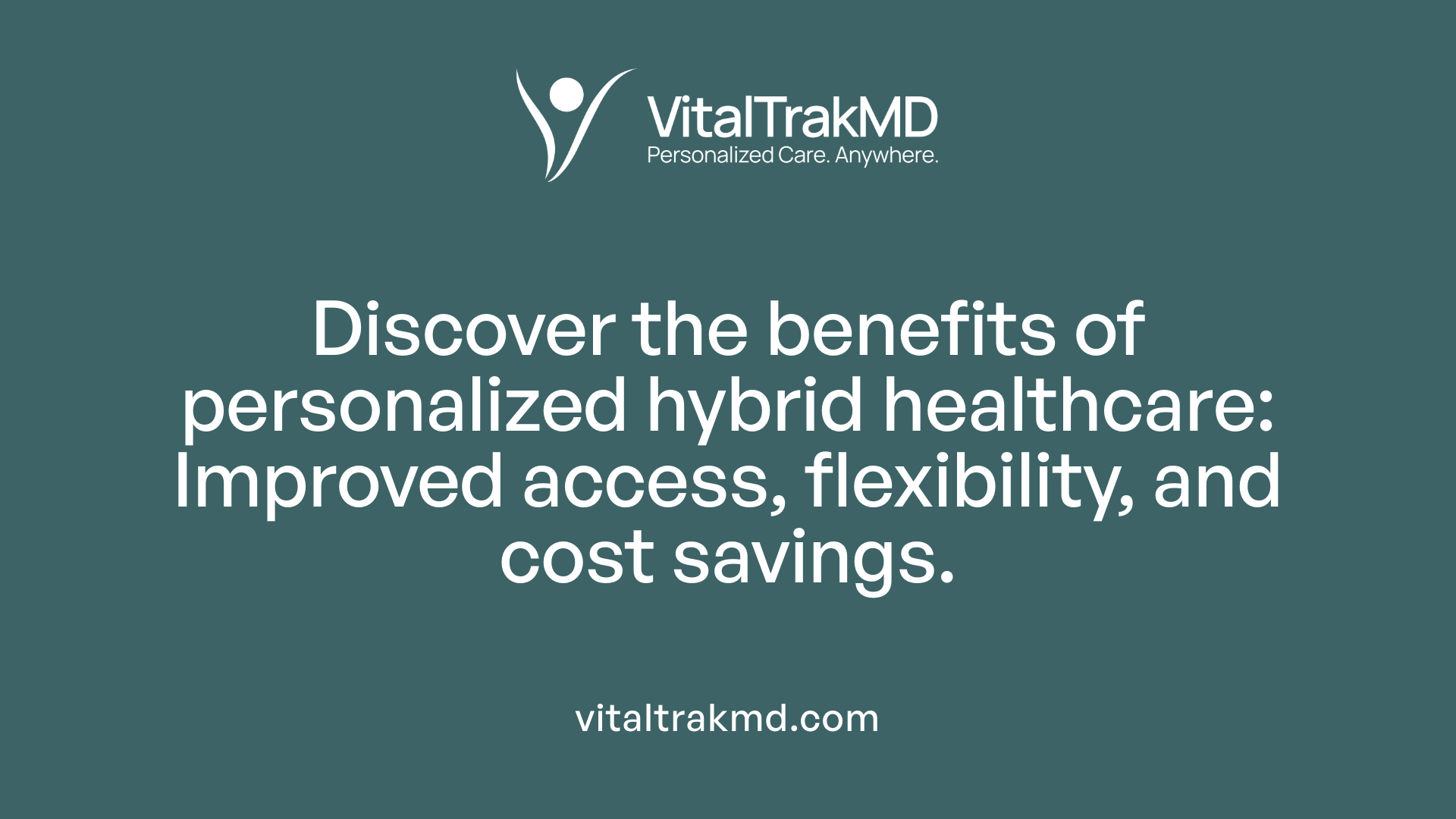
What are the benefits and advantages of personalized hybrid healthcare programs?
Personalized hybrid healthcare programs provide a range of notable benefits that significantly enhance patient care and experience. One of the primary advantages is improved access to healthcare services, especially for individuals living in remote or underserved areas. The integration of virtual consultations and remote monitoring allows patients to receive medical advice and manage chronic conditions without the need for frequent in-person visits, reducing travel time and related logistical challenges.
Flexibility is another significant benefit. Patients can choose appointment times that best fit their schedules and utilize digital tools such as telehealth, online messaging, and educational resources. This convenience fosters better adherence to treatment plans and encourages active patient participation in health management.
These programs also boost patient engagement and satisfaction by offering personalized strategies tailored to individual health profiles. Using digital health technologies, such as wearable devices and remote sensors, providers can continuously monitor health status, enabling early detection of potential issues and proactive interventions.
Continuity of care is strengthened through consistent communication across multiple channels, ensuring patients receive ongoing support whether through virtual follow-ups or in-person visits when necessary. This seamless approach helps reduce unnecessary ER visits and hospitalizations, promoting safer, more consistent care.
Cost-effectiveness stands out as a key benefit for both patients and healthcare providers. By minimizing unnecessary in-person appointments, optimizing resource use, and preventing complications through early intervention, hybrid models lower overall healthcare expenses.
In summary, personalized hybrid healthcare combines the strengths of digital and traditional care to create a more accessible, efficient, and patient-centered health system. It supports better health outcomes, higher satisfaction rates, and smarter resource utilization, making it an increasingly vital approach in modern healthcare systems.
Implementation, Functioning, and Challenges of Hybrid Systems
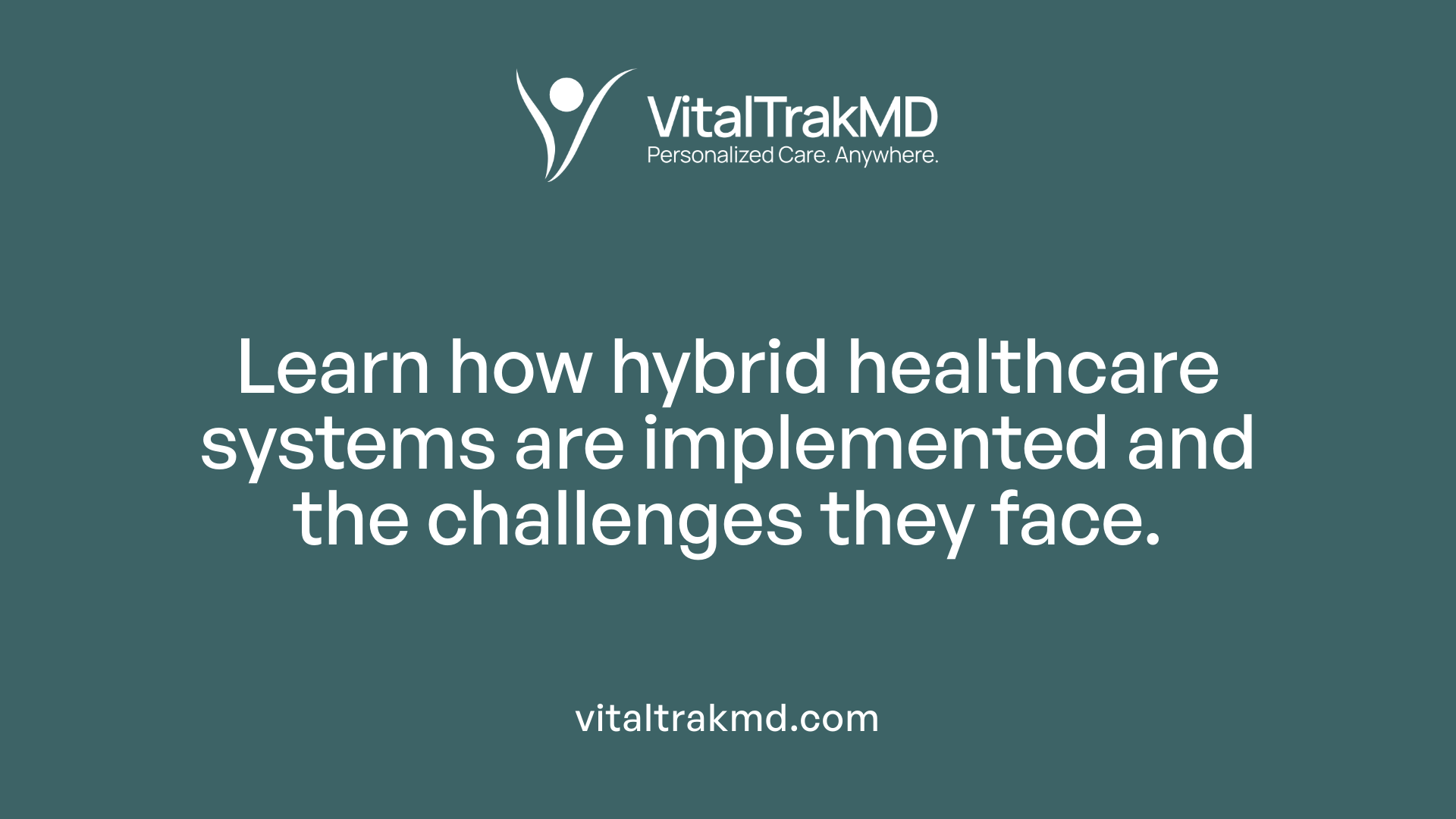
How are hybrid healthcare systems implemented and how do they function?
Hybrid healthcare systems combine traditional in-person medical care with advanced digital tools to create flexible and patient-centric healthcare experiences. This integration involves deploying telehealth platforms, remote monitoring devices, and virtual communication channels that support continuous care outside the clinical setting.
For example, the Mayo Clinic’s Advanced Care at Home (ACH) program demonstrates a successful model of hybrid implementation. It utilizes a virtual command center that coordinates the delivery of in-home medical supplies, remote patient monitoring, and virtual consultations. This approach allows hospital-level care to be safely provided at patients' homes, handling complex medical cases with low rates of mortality and readmission.
These systems promote seamless access to care, especially benefiting patients who face transportation challenges or live in remote areas. They support ongoing treatment, post-acute care, and chronic disease management by ensuring patients remain connected with healthcare providers through digital means.
Setting up such systems involves choosing secure, user-friendly technological platforms, training healthcare staff and patients to use these tools effectively, and establishing protocols that determine when in-person visits are necessary. Balancing remote and face-to-face care depends on individual health conditions, patient preferences, and the available infrastructure.
While these models enhance access and efficiency, they also pose challenges. Integrating different technologies, safeguarding sensitive health data, and ensuring equity in access remain critical. Addressing disparities involves community engagement, policy supports, and personalized care planning to tailor services to diverse patient populations.
In summary, hybrid healthcare models are transforming service delivery by merging technology with traditional medicine, exemplified by programs like Mayo Clinic’s ACH, which aim to improve outcomes, reduce costs, and enhance patient satisfaction through innovative, integrated care.
Future Evolution and Potential of Hybrid Healthcare
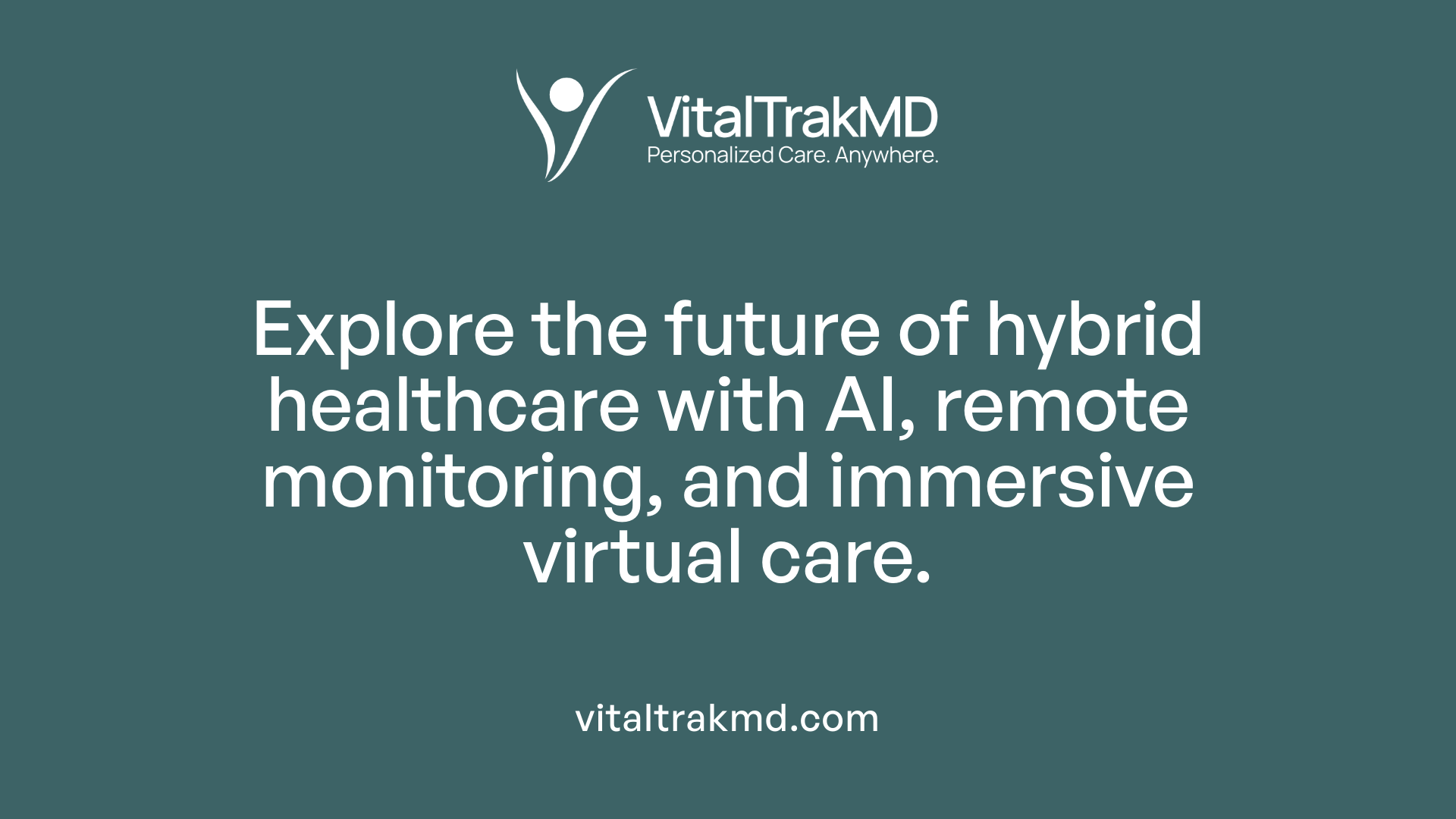
What is the future potential and evolution of hybrid healthcare models?
The future of hybrid healthcare is expected to be increasingly personalized and tech-driven. Advances in artificial intelligence (AI), augmented reality (AR), virtual reality (VR), and smart sensors will play a central role in transforming patient care.
AI can analyze large amounts of health data to develop tailored treatment plans, predict health risks, and improve diagnostics. Augmented and virtual reality tools will facilitate immersive telehealth experiences, making remote consultations more effective and engaging.
Wearable sensors and remote monitoring devices will continuously collect real-time health information, allowing clinicians to track patient progress outside of traditional settings. These innovations will enable proactive care and early intervention, especially for chronic conditions.
Hybrid models will expand across various healthcare environments—hospitals, clinics, emergency services, and homes—integrating virtual and in-person care seamlessly. This will improve capacity while providing flexible, patient-centered services.
Automation and digital analytics will streamline workflows, reduce administrative burdens, and minimize costs. Simultaneously, policymakers and insurers are expected to develop new reimbursement structures that support innovative care delivery.
Interoperable platforms will facilitate secure data sharing among providers, enhancing care coordination. As a result, healthcare systems will become more adaptable, resilient, and efficient.
Ultimately, hybrid healthcare will evolve into highly flexible systems designed to better meet patient needs, address workforce shortages, and manage rising healthcare costs, creating a future where accessible, personalized, and efficient care is the standard.
The Future of Personalized Hybrid Healthcare
As the healthcare industry continues to evolve, personalized hybrid healthcare programs are poised to play a pivotal role in making care more accessible, efficient, and tailored to individual needs. By leveraging technological advancements, fostering innovative care delivery models, and maintaining a focus on patient-centeredness, these programs will help address longstanding healthcare challenges such as cost, access disparities, and provider shortages. With continued investment, policy support, and technological integration, hybrid healthcare is set to transform the patient experience and outcomes in the years ahead, leading to a more resilient and adaptable healthcare system.
References
- What is a Hybrid Patient Care Model and How to Implement It
- What Is Hybrid Healthcare, and Why Should Independent Practices ...
- What Is Hybrid Primary Care & How Does It Work? | Circle Medical
- Healthcare's Future Is a Hybrid Model - Caregility
- How Hybrid Healthcare at Crossover Works
- How the hybrid healthcare model is transforming patient access
- Hybrid Healthcare - Provista
Recent articles
Want to Feel Better and Live Healthier?
Join hundreds of patients taking control of their health with personalized care that fits their life – not the other way around.
Rated 4.8/5 by 32+ customers



